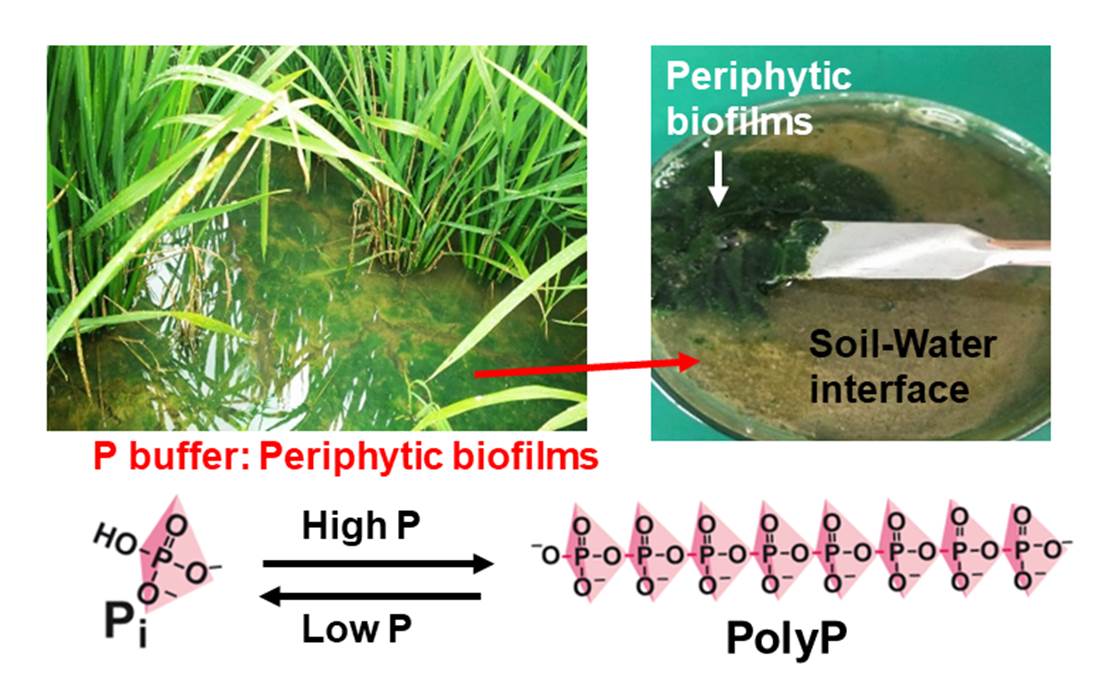Phosphorus is one of the backbone nutrients to sustain food production, but is non-renewable and has no feasible substitute, foreshadowing a potentially serious hindrance to long-term social and economic development. Phosphorus retention and utilization in farmland may be enhanced by artificially managing P cycling during crop production. In reality, however, such operation proves to be anything but small task. An established ecological phenomenon in shallow aquatic environments is the extensive development of periphytic biofilm, a microbial assemblage (composed of chiefly algae, cyanobacteria, and to a lesser extent heterotrophic bacteria and fungi) ubiquitously grown on submerged surfaces (plants, rocks, and sediments). Periphyton is a primary producer and energy source. Most intriguingly, it has well-documented high affinity to phosphorus as periphytic organisms can rapidly accumulate excess P in their biomass, resulting in strengthened P fixation.
The ability of periphyton to buffer environmental P in shallow aquatic ecosystems may be a natural lesson on P utilization and retention in paddy fields. Recently, a research group led by Prof. Henry H Teng from school of Earth System Science, Tianjin University, revealed the routes and tools through which periphytic organisms adapt to and regulate ambient P fluctuation. The mechanistic understanding further implicates that the biofilm may serve rice plants to alleviate P stress. The results have been published in Applied and Environmental Microbiology.

Under stressed (both excessive and scarce) phosphorus conditions, they found increased populations of the bacterial genus capable of transforming orthophosphate to polyphosphate, as well as mixotrophic algae who can survive through phagotrophy. These results were corroborated by observed polyphosphate buildup under low and high P treatment. Exometabolomic analyses further revealed that periphytic organisms may substitute S-containing lipids for phospholipids, use siderophores to dissolve iron (hydr)oxides to scavenge adsorbed P, and synthesize auxins to resist phosphorus starvation. These findings not only shed light on the mechanistic insights responsible for driving the periphytic P buffer but attest to the ecological roles of periphyton in aiding plants such as rice to overcome P limitations in natural environment.
This work was supported by the National Key R&D Program of China (2016YFD0200306). and National Natural Science Foundation of China (41701275 and 41830859).
Article information:
Jianchao Zhang, Jing Su, Chao Ma, Xiangyu Hu, Henry H Teng*. Periphytic microbial response to environmental phosphate bioavailability – relevance to P management in paddy fields. Applied and Environmental Microbiology. 2021. 01201-21.
Link: https://journals.asm.org/doi/10.1128/AEM.01201-21